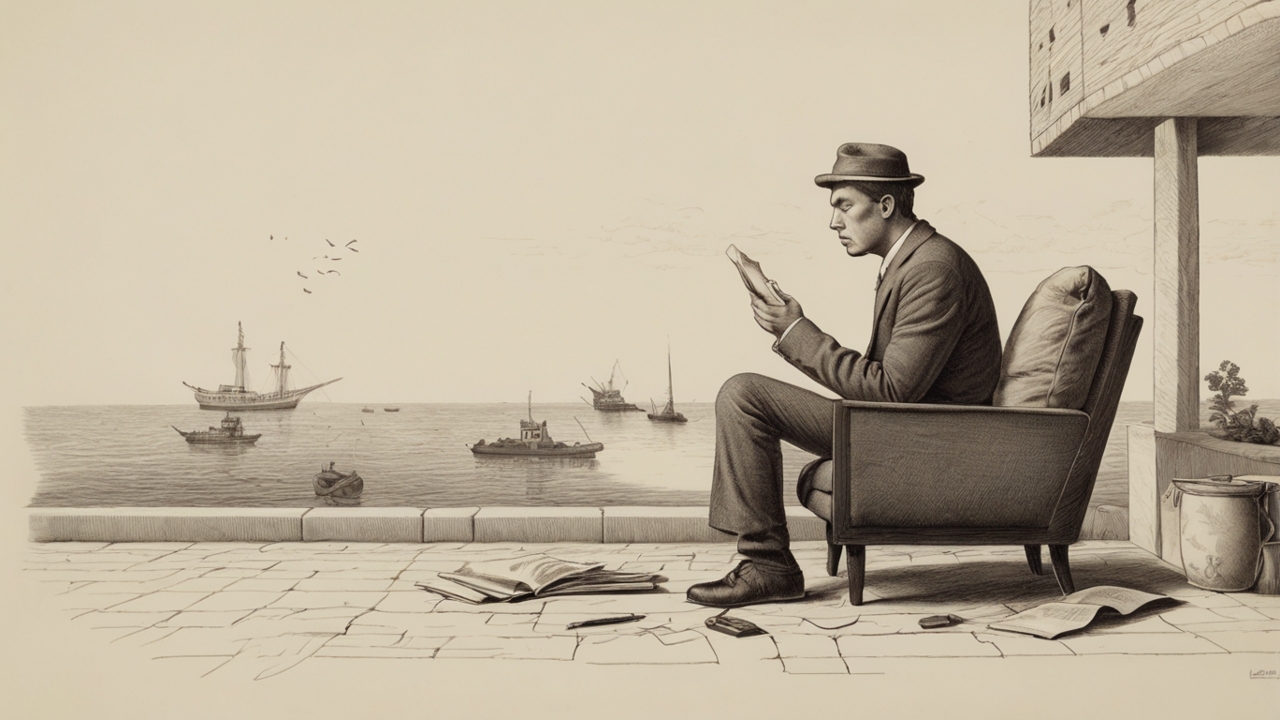Round Rock Journal – In a world addicted to productivity and constant stimulation, Strategic Boredom might sound counterintuitive. Yet, it’s precisely within the quiet spaces of inaction that our minds find room to breathe, wander, and create. We live in an era where every pause is filled with scrolling, streaming, or multitasking, leaving little room for genuine mental rest. But what if boredom when practiced deliberately is not an obstacle, but a tool for deep creativity and mental clarity?
From great artists to visionary entrepreneurs, many credit their most brilliant ideas to moments of stillness. This concept of “productive boredom” challenges the modern obsession with busyness and reminds us that sometimes, doing nothing is the most strategic thing you can do.
“Read also: Iris Ventures Invests in Goddess Maintenance Co: A New Era of Biotech Beauty Innovation“
What Is Strategic Boredom?
Strategic Boredom isn’t about mindless inactivity or laziness; it’s a conscious decision to allow your mind to disengage from constant external input. It’s about creating deliberate mental gaps spaces where imagination can flourish. Unlike aimless boredom, which breeds frustration, strategic boredom provides structure to stillness, turning unoccupied moments into fertile ground for creativity.
When we allow ourselves to be bored intentionally, the brain begins to explore internal landscapes. It forms unexpected connections, solves problems subconsciously, and brings forward ideas buried beneath the noise of daily life. This form of boredom isn’t passive; it’s a discipline of mental openness one that invites new patterns of thought.
The Neuroscience Behind Doing Nothing
Scientific research supports the creative power of boredom. When we disengage from active problem-solving, the brain’s default mode network (DMN) activates. This network is responsible for imagination, reflection, and self-referential thinking. In other words, when we stop focusing on tasks, the brain doesn’t shut down it reorganizes and connects ideas in the background.
Studies from the University of Central Lancashire revealed that participants who experienced mild boredom performed better on creative tasks afterward. Why? Because the brain, deprived of stimulation, starts seeking novelty internally. In essence, boredom nudges us toward creative exploration as a biological response to monotony.
How Modern Life Suffocates Creativity
Ironically, the more connected we become, the less space we have for creative thinking. The endless pings, notifications, and digital noise of modern life leave little room for reflection. We move from one dopamine hit to another, conditioned to avoid even a second of silence.
But creativity doesn’t thrive in chaos; it thrives in stillness. Constant activity keeps us reactive instead of reflective. By avoiding boredom, we rob ourselves of incubation time the very process by which ideas mature and merge into innovation. Therefore, the modern creative crisis isn’t a lack of inspiration, but a lack of stillness.
Strategic Boredom in Practice
Practicing Strategic Boredom doesn’t mean isolating yourself in silence for hours. It’s about integrating purposeful pauses into your day. Try simple habits like taking a walk without your phone, sitting quietly for 10 minutes, or allowing yourself to stare out the window without guilt.
During these pauses, resist the urge to fill the void with information. The goal is to let your thoughts wander freely. Some of history’s greatest breakthroughs from Newton’s theory of gravity to J.K. Rowling’s Harry Potter emerged during moments of quiet contemplation. The key is consistency: by regularly allowing boredom, we train the mind to become comfortable with silence and more receptive to original ideas.
“Read also: Rewriting Your Inner Narrative, Transforming from Victim to Creator“
Why Creativity Needs Emptiness
Creativity is not born from constant stimulation, but from contrast the dance between chaos and calm. Strategic Boredom acts as the blank canvas on which new thoughts can be painted. Without moments of emptiness, the creative mind becomes cluttered, unable to differentiate between what matters and what doesn’t.
Just as athletes need rest days to rebuild muscle, creative minds need mental stillness to rejuvenate. When we give ourselves permission to do nothing, we create the psychological conditions necessary for innovation. The irony is clear: to think better, sometimes we must stop thinking altogether.
Balancing Stillness and Productivity
The challenge lies in finding the balance between action and inaction. Too much busyness leads to burnout, but too much idleness can become stagnation. Strategic Boredom occupies the sweet spot in between a state of restful awareness that nurtures the imagination while maintaining intention.
Setting structured “boredom intervals” throughout your day can be surprisingly powerful. For instance, replace a coffee break with a short moment of silence. Or dedicate the first 15 minutes of your morning to doing nothing at all no phone, no music, no planning. Over time, this balance rewires the brain to see stillness not as wasted time, but as creative incubation.
A Personal Reflection on Silence as Strength
As someone who writes and creates daily, I’ve learned that my best ideas rarely appear when I’m forcing them. They come in showers, walks, or quiet mornings when my mind drifts aimlessly. That’s the essence of Strategic Boredom trusting that creativity thrives in the absence of pressure.
The modern world glorifies constant productivity, but perhaps real genius lies in those who can pause, observe, and listen to their inner dialogue. Embracing boredom doesn’t make us less efficient; it makes us more human, more intuitive, and more inspired.


